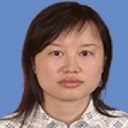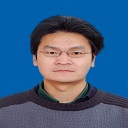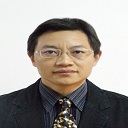CALL FOR PAPERS
Geographic Information Science (GIS) research is advancing into the era of
spatio-temporal big data. This requires the transformation of conventional GIS into an
analytical GIS capable of supporting complex model analysis. To meet this challenge, W.K.
Clifford's Geometric Algebra (GA) provides a multidimensional, unified, and
coordinate-independent theoretical tool for the expression and analysis of GIS data. This tool
upgrades calculus, geometry, and signal processing methods to reduce computing complexity while
providing useful methods for integrating GIS data models and geographic analysis models. With
the development of such tools, challenging applications are emerging. Not only can
spatio-temporal unified expressing frameworks of geometric objects be built, but existing
algorithms and models can also be effectively embedded.
This conference will focus on GA-based multidimensional data management and
analysis, computation technologies, and reformulation of analysis models (such as ODE, PDE,
etc.) as well as software development. The conference aims to bring together leading scientists
from both the GIS and GA communities worldwide to discuss the latest frontiers in their
respective fields. In addition, there will be a tour of the Key Laboratory for Virtual
Geographic Environment, Ministry of Education, to demonstrate the current development of
GA-based multi-dimensional GIS. The tour will include demonstrations of the hardware system,
software, and applications.
THEMES
The conference will organize six keynote presentations, each lasting 45 minutes
followed by a 15-minute discussion, as well as 15-25 panel sessions, each consisting of
20-minute presentations followed by a 5-minute discussion. These sessions are designed to
provide ample opportunities for communication and discussion regarding the latest and most
promising directions in the field.
Themes include but are not limited to:
-
Fidelity description of the geographical system with multi-domain coupling
- GA-based spatio-temporal unification framework
- GA-based representation of multi-domain data
- GA-based unified data model and structure
- GA-based scene knowledge constraint fusion
- GA-based all-in-one geographic scene building integration
- Twin-based simulation of human-land relationship
- GA-based data fusion and visualization technology
- GA-based digital twin model construction
- GA-based Evolution and mechanism of action
-
GA representation and analysis of spatio-temporal trajectories & dynamical network
-
GA-based human-land coupling framework
-
Highly efficient spatio-temporal computing of geographically complex systems
- Geometric algebra and complex networks
-
Advances in geometric algebra for quantum spacetime big data computing
- Geometric algebra and earth system models
-
Geometric algebraic expressions and spatial and temporal data analysis
- GA-based cross-domain spatio-temporal analysis
- Integrated, modular, customizable GIS platform
- Architecture technologies of GA-founded software
- Software Development Kit for GA-based software
- Interaction, visualization technologies of GA-founded software
- Flexible cloud computation platform for GA algorithms
ABSTRACT
We kindly request that you submit your abstract, consisting of 200-400 words, via
email to liuzhenxia@nnu.edu.cn (with a CC to 09368@njnu.edu.cn). While a full paper is welcome,
it is not mandatory. All abstracts will be published with open access on the conference website.
Selected papers will be recommended for publication in reputable international journals.
.jpg)









